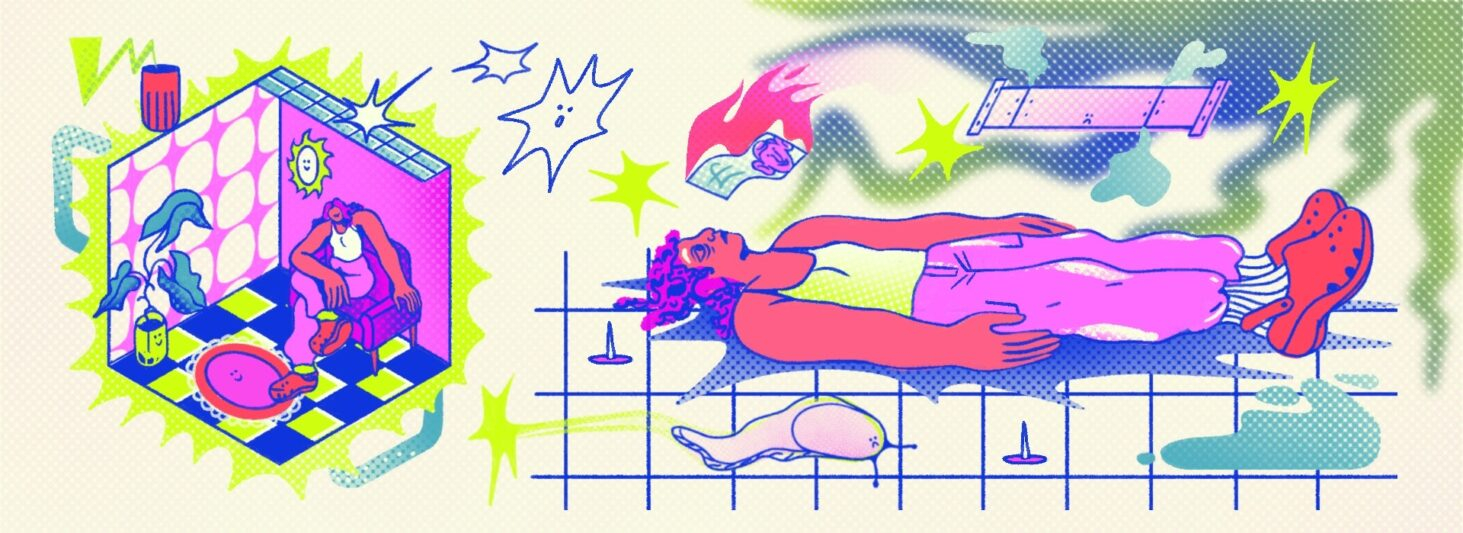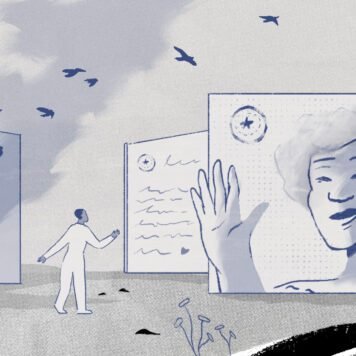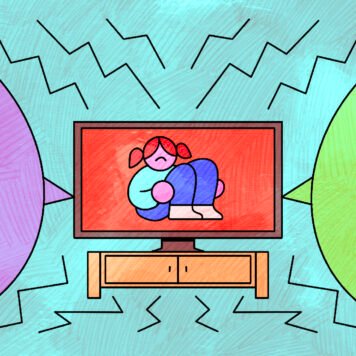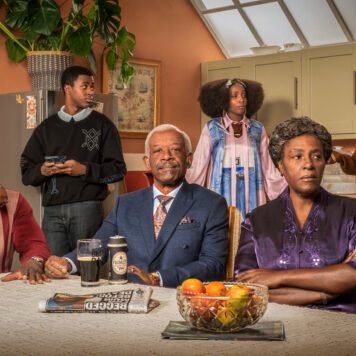Like most people I know, de-moulding is a biweekly ritual. My furniture stands two inches away from the walls and I recently had to chuck my beloved pair of cowboy boots because they got infected.
But I consider myself fortunate – I won the coin toss when we moved in, meaning my room is the biggest and the airiest. My housemate’s room is half the size and getting absolutely decimated by creeping black mould.
Last winter, our broken boiler sent her to A&E with chest issues. Our pleas to the estate agents for roof repairs have been met with indifference, leaving us to contend with leaking ceilings and weakened walls.
All this to say: I’ve been thinking a lot about how the UK’s housing stock is literally rotting away. Between scammy estate agents scraping as much cash as they can off the top, shitty absentee landlords, and broke, disillusioned renters, we’re witnessing the deterioration of a vital resource.
And it’s making us sick and depressed
National Energy Action estimates that 6.5 million UK households are paying 10% of their income on energy bills. They’ve found low-income households live in the least thermally and energy-efficient homes and that isn’t changing – meaning that when people do turn the heating on, it’s terrible for the planet and widening wealth inequalities.
16% of the UK’s total carbon emissions arise from our homes, which is largely because the UK has the oldest homes in the world, and the worst insulated in Europe. Heat is pouring out of our single-glazed windows and crumbling roofs.
Poor housing is estimated to cost the NHS up to £2bn per year in England alone. Research indicates 21% of English adults have had a housing issue that negatively impacted their mental health in the last five years, with 30% of that group saying they had no issue with their mental health before this.
As I write this, I can see the spots of grey returning to the wall in front of my desk, and I feel these crises collapsing in on us. But amidst the despair, could there be a silver lining?
Housing serves as a nexus for various societal issues, presenting an opportunity for holistic and intersectional solutions. We’ve been talking a lot about this on shado-lite recently: how, by prioritising quality housing, we could address wealth disparities and health inequalities while decarbonising housing stock.
We need to retrofit our housing stock rapidly. This means taking our existing infrastructures and updating them with low-carbon heating and energy systems. But this is usually expensive and disruptive work! Can technology help us do this accessibly, efficiently and cheaply?
Robots and drones?
Retrofitting our homes with low-carbon heating and energy systems offers promise. Innovations like the Q-Bot, a remote control car which can spray insulation under floors with minimal disruption – in 2022, it reduced the average homeowner heating bill by an average of £190 a year and 700kg of carbon.
Thermal imaging cameras see infrared alongside visible light taking the guesswork out of insulating your home, visually mapping heat loss to design efficient retrofit approaches. Some companies are now strapping them to drones and sending them into space, you can also take a DIY approach by borrowing cameras from your local council.
Once you identify your areas of heat loss, you might use Aerogels to patch it up. With 30% of the UK’s existing buildings being hard to treat due to moisture problems (cough cough, mould), Thermulon developed aerogels to minimise the transfer of heat through building fabric, perfect for internal insulation. Fire-proof for tall buildings, they provide an answer to the existential flammable cladding crisis exposed by the Grenfell disaster.
Virtual Reality might also have a useful application via digital twins, where people can build a virtual replica of their physical homes to test out and estimate retrofit costs more accurately. Nesta reports uses of Microsoft’s hololens to map renovation plans, with aims of using machine learning to forecast and optimise energy usage on behalf of users.
Optimisation to dislocation?
Nice to know robots, VR and drones might actually be useful to normal people. Some experts even suggest technologies are converging towards a new paradigm – Comfort as a Service.
Here, building occupants release control of operating tech in their home to a menagerie of ambient technologies, big data, cloud and predictive computing optimising energy efficiency for them. This ultimate smart home is modelled like a subscription service where technologies and algorithms are deployed for ‘optimal levels of warmth using the cheapest and greenest energy.’
While these tech advancements offer convenience, they also relinquish control to digital entities, raising concerns about privacy and autonomy. With algorithms predicting our desires, we hand the power over to big tech and big data to make the best choices for us. This is scary to me.
A friend got solar panels on her roof and became obsessed with monitoring how much energy she uses via an app and when it would be cheapest for her to put her washing machine on. An experience that many new solar panel owners share.
I loved this – renewable technologies installation becoming a catalyst for better understanding our usage and energy systems. Retrofitting has the potential to be a great educator, to help us understand the impact of our lifestyles and live more consciously – if we optimise that away through automation, does it take away the onus for us to reduce the amount of energy we use?
And we have to consider these technologies through a climate justice lens by looking at their life-cycle. How much lithium are they using? How much carbon does it cost to make these robots and drones? Is it all worth it?
Subscribe to shado's weekly newsletter
Exclusive event news, job and creative opportunities, first access to tickets and – just in case you missed them – our picks of the week, from inside shado and out.

Low fi?
Moreover, we mustn’t overlook low-tech solutions rooted in ancient wisdom. Societies have lived for thousands of years in much colder and warmer conditions than the UK.
Low tech and architectural approaches can design in insulation and ventilation. The city of Yazd, in Iran, is known as the city of windtowers. Ancient civilisations in Western Asia and North Africa employed windcatchers for passive cooling solutions which are still used in contemporary architecture. A windcatcher is a chimney-like structure made of natural building materials, constructed on the rooftop of structures to direct the cool breeze towards the interior space.
Passivehaus, in Germany, takes a similar approach – achieving thermal comfort through improving the fabric and design of buildings. More than 5000 homes in the Netherlands have undergone a deep retrofit with Energiesprong, who take laser scans of a building’s exterior and design a shell of panels to snap onto the outside of the building to increase its thermal efficiency.
But as a renter, no matter how enthusiastic I am about deep retrofits, thermal efficiency and future-proofing housing, none of this is within my control. When I can barely convince my estate agent to convince my landlord to fix our broken roof, how can I convince them to invest in a deep retrofit to bring down the bills that they don’t even pay?
And when they do, it can drive up prices. Zillow reports that 60% of buyers prioritise energy efficiency, willing to shell out up to £15,000 extra for a solar-powered home. While this seems positive, it ultimately perpetuates inequality, leaving the less affluent with inefficient, costly housing options, exacerbating the wealth-mental-health-housing gap.
From the house to the city?
Perhaps the solution lies not just in individual home-owners, but in systemic change.
District heating is a system that uses a singular central heat source to distribute hot water through a network of insulated pipes to multiple dwellings – delivering efficient, low carbon, cost-effective heat. The UK government has acknowledged it as essential in the move towards net-zero, but adapting your house to a heat network is still expensive. Technology alone won’t intrinsically tackle these intersecting crises because they cut much deeper.
Retrofit-reimagined is a movement of community based organisations asking ‘What if the climate transition and retrofit of our homes and streets were designed, owned and governed by the people who live there?’ They’re focused on energising collective and area based models over consumer-led retrofit, understanding ‘retrofit of the home is part of a larger urban system’ to find new models, methodologies and pathways forward.
One of these organisations, We Can Make, from my hometown in Bristol, are working this out in practice. As a community land trust, they are creating affordable homes through experimental microsites in between buildings. In Atlanta, The Guild are something similar, reimagining real estate development to build community wealth and resilience, building an alternative economic development model and community land trusts where marginalised folks can ‘own and govern more of the assets which make communities vibrant’.
Tech advancements might reduce emissions, but without considering who benefits and the systems they perpetuate, they could exacerbate the health-wealth gap. Real change lies in community-led approaches that redistribute land, wealth, and housing to those in need, challenging the foundations of private property.
We require rent controls, renter protections, and fresh perspectives on housing, such as revitalising brown-sites for van-dwellers and retrofitting dying malls into community housing trusts. Let’s look to the wisdom of squatting and landless movements and take power back. There are different ways of doing things and we do have the power to change how we live if we think longer than an election cycle, but truly building roots and investing in community – like the housing co-op movement.
However, as elections loom, the housing crisis takes centre stage, demanding urgent collective action. From the grassroots efforts of tenant unions advocating for renters’ rights to the implementation of innovative urban planning strategies, the shift in tides is a moment to take hold of. People can connect with housing, it can help explain bigger and more transformative visions for society. It’s a call to scrub away the mould of neglect and indifference and rally together to forge a future where safe, affordable housing is a fundamental right for all.
What can you do?
- Join a tenants union: ACORN and London Renters Union do great work
- Listen to our shado-lite eps unpacking radical approaches to the housing crisis
- Read more articles from Zoe’s column: Can tech help us get closer to nature?
- Get involved with groups imagining and organising around a better future for homes and housing:














